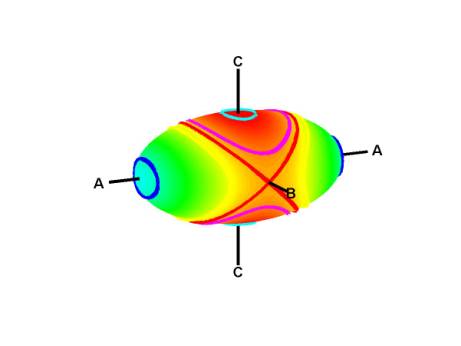Let $C$ be a cuboid (rectangular parallelepiped) with edges of lengths $a < b < c$.
Consider an axis that passes through the centers of two opposite faces of $C$. There are three such axes, one passing through the centers of the $a$–$b$ faces, one through the centers of the $a$–$c$ faces, and one through the centers of the $b$–$c$ faces.
Someone told me many years ago that if you throw the cuboid in the air and spin it around the $a$–$b$ or the $b$–$c$ axis, rotation will be stable in the sense that the rotation will tend to return to its original axis if it is slightly perturbed. But they said that a cuboid spinning around its $a$–$c$ axis is unstable, in that any small deviation in the axis of rotation will tend to be magnified over time.
I have tried to verify this by tossing various cuboid objects, such as Zippo lighters, cell phones, and wooden blocks; it appears to be true.
My questions are:
- Did I describe this correctly? If not, what's the right description?
- What is the mathematical explanation of this phenomenon?
- Is there an intuitive explanation?

